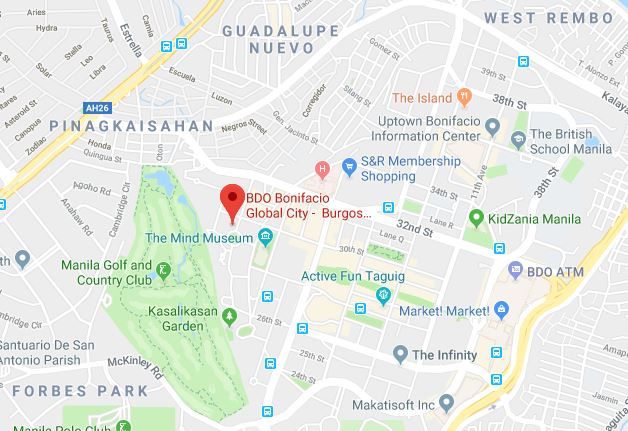Diamonds Are Forever: A Case Study on Our Jewelry Photography and Services
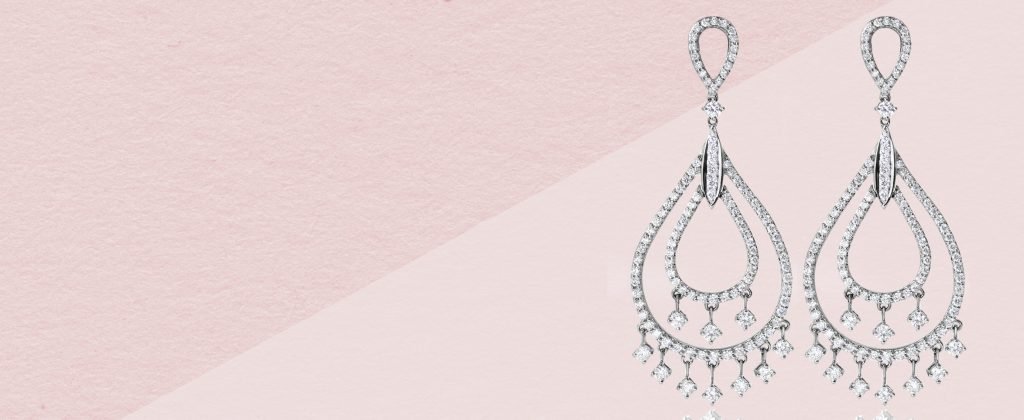
Diamonds are forever – this is something one of our clients knows all too well. We collaborated with the leading diamond e-tailor with the world’s largest selection of certified diamonds. They needed high-quality photos and videos that presented their high-end products at its best, and we were happy to be of service and deliver.
By providing them with product photography and videography, jewelry photo retouching, our bulk image editing services, and other services offered in Paper Boat Creative, we’ve provided them with stunning photos of their diamond jewelry products that reflect the quality of the client’s brand.
Before we get to our services and processes, here’s everything you need to know about our client.
About the Client
The client is a diamond jeweler based in Europe. They are an award-winning jewelry brand and have been at the forefront of the diamond jewelry industry for almost 15 years. The company has several showrooms across Europe and is owned and staffed by people with years of experience even prior to the business’ inception.
Aside from their showrooms in Europe, the client sells their jewelry online and caters to buyers worldwide. In this digital age, more businesses are making their mark on the internet. While you’ll find countless options for online jewelry sellers, most customers will still want to do business with a certified company if they’re spending hundreds of dollars on luxury jewelry.
One look at their website, and you know the client means business when it comes to high-quality diamonds with price ranges from a few hundred up to thousands of dollars. Their products were meant for people looking to invest in for diamonds that will last them a lifetime. Our client wanted to stand out amongst a sea of online jewelers and jewelry sellers.
A visually pleasing web design and an effective marketing strategy could attract people onto their website, but getting people interested in their product was an entirely different matter. They understood that, when it came to jewelry, no matter how enticing they could talk about their diamond rings, a potential buyer isn’t going to believe the client’s professional and luxury brand and shell out hundreds of dollars on their products if the product’s photo looked amateurish and low-quality. They needed photographs that matched their brand: luxurious, elegant, and stunning.
This was where our services came in.
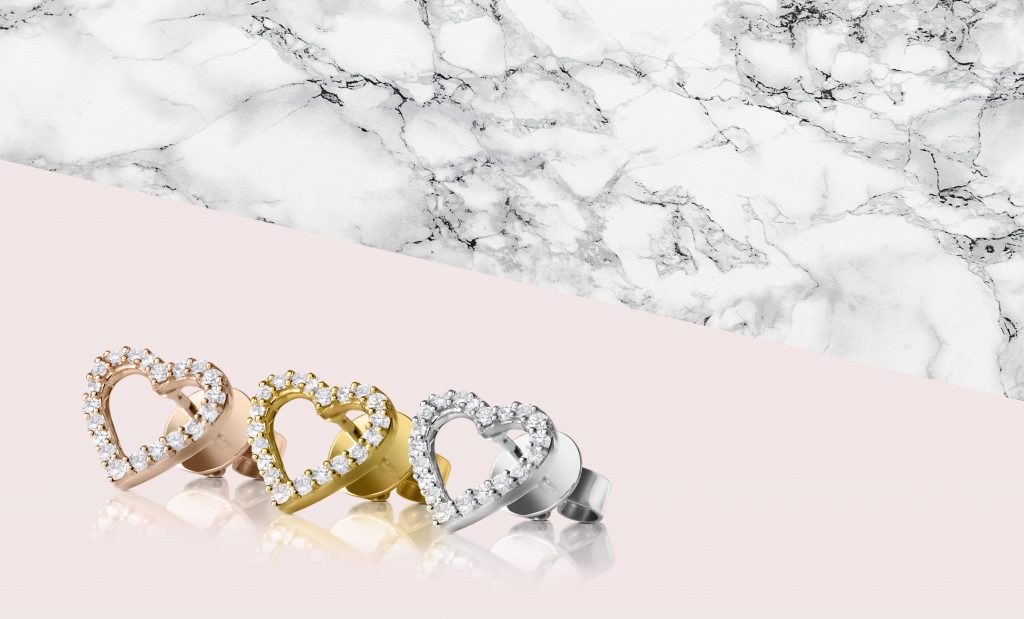
Studio Product Photography
Nearly all good marketing strategies involve photos of the company’s products. It’s hard to convince people to buy products if they don’t know exactly what they’re buying. This rule may not apply to all products, but when you’re convincing people to buy high-end jewelry, the photo a business uses can make or break the way people see your product. A good photo can make people glance at your product; a high-quality photo will make them stop and distinguish your product from the rest of your competitors.
Jewelry is a tricky product to shoot that only professionals can truly master. Diamond jewelry – especially diamond rings – are a relatively small product, so your shot needs to focus on the important details of the product, such as the color, cut, and clarity, without sacrificing quality or aesthetic. If you’re selling jewelry, you’ll want your customers to see as much detail as possible.
We setup our studio product photography depending on several factors relative to the product our clients needs. When it comes to jewelry, we use macro lenses that enhances even the smallest stones. The lenses emphasize the curves and intricate detail of each of the client’s products as it makes a contrast between each of its different aspects.
As a result, the jewelry photos our clients got were clear and stunning images that were true to life. While what the clients may see may vary due to the quality of their own computers or smartphone screens, each photo shows the best angle and every detail of each of the jewelries in their catalog. While we do edit our photos before final use, the fact that we’re getting the best shots of your products means that we only improve your product photos as we go along with our process.
Product Photography Tips: Jewelry
Because of the unique aspects of jewelry, product photography here has to take into consideration of the various lights, styles, and highlighted detail on the photo. A computer may look good on a desk or complemented with tools like pens and notebooks, but when you’re dealing with jewelry, you want the focal point to be directly on your product.
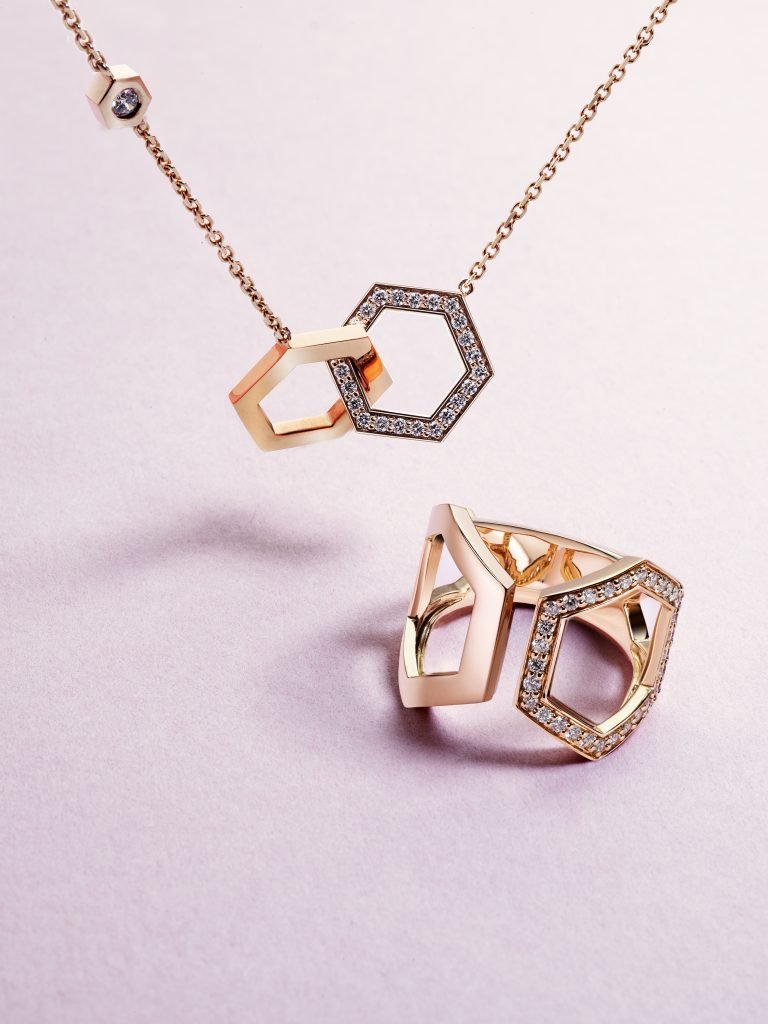
1. Natural Lighting
– How do we light product shots? It depends on the subject we’re shooting. When diamonds are real, they sparkle gray and white inside the gem and reflect rainbow-colored lights onto other surfaces where it bounces off light. The inner sparkle is known as “brilliance”, while the rainbow colors are known as “fire.” In contrast, a fake diamond will look like it has rainbow colors trapped where the grayish brilliance ought to be. While bringing out the shine to its fullest requires some amount of editing, we needed to take photos that not only brought a bit of that brilliance out but also maintained the natural coloring of the product and put that into our client’s photos.
We shot our client’s jewelry under controlled natural lighting. The result was photos where even the smallest diamond sparkled the way genuine diamonds did. And because the color of the jewelry was not warped by off-balanced lighting, our client got photos that were vibrant and true-to-life. In this case, we turned the phrase “what you see is what you get” into a positive one.
2. Plain Backdrops
– Because we wanted each diamond to stand out, we avoided taking cluttered or heavy backdrops and opted for a simple white background for most photographs or a light colored background or marble texture that won’t take the attention away from the main product.
Our client focuses solely on diamond stones, which is more than enough to create a stunning image. Diamonds are also reflective of light, which means that its properties absorbs all other colors and could alter the light of everything around it. While it’s acceptable to use both black and white backdrops, the advantage of white is that it reflects the light coming from your light source. A black backdrop, on the other hand, absorbs the light.
Simple backdrops let the jewelry stand out on its own, especially when we want to highlight the brilliance, its color, intricate detail, and design. If there has to be something in the picture, we either add a shot of the body part where the jewelry is worn (e.g. the fingers, wrist, and ear,) or some props (as you can see in our portfolio that complement the jewelry but don’t necessarily draw the attention away.
3. Camera & Crew
– Paper Boat Creative has seven years of experience in operations, but our team comprises of illustrators, concept artists, design and craft specialists, and other experienced and talented individuals in the industry. Our own creative director was awarded for her skill in commercial photography. The advantage over other photography and editing services out there was that our clients, regardless of size and the product they sell, know that the output they’re paying for is top-quality professional work.
For jewelry, we use macro lens on our DSLR equipped with macro lens. This provides a 1:1 magnification ratio that has allows us to shoot small photo subjects clearly. If you’ve ever taken an old phone camera, zoomed in until it reaches its limit, and notice how grainy and pixelated it looks, this is what macro lens avoids.
Contrary to what some amateur photography bloggers write online, we don’t recommend increasing aperture to make photos look brighter. The more light that enters the lens, the more the subject tends to go out of focus. This might be effective for portraits and photos of much bigger products, but if we’re taking a picture of, let’s say, one of the client’s diamond bracelets laid flat, the side that’s closer to the viewer may be clear, but the other side of the bracelet stays out of focus. So, for our client, we used an aperture of f/11 or f/16 and then adjusted the lighting fixtures accordingly.
Product Video Shooting
Photos can greatly enhance the quality and reliability of our client’s website, but we believe adding more media to the client’s website can improve the website’s aesthetic. We believed it would look better with interactive portions, moving images, and the ability for the consumer to see all-around what it was they were buying.

How to Shoot a Product Video
Some rules we mentioned earlier in photography also applies to videography: keep the lighting natural and use a simple backdrop or, if necessary, props that won’t completely outshine the product. However, we had to take note of two other factors.
First, the camera movement. These were slow deliberate movements that served a purpose. In one such example, our videos provided a 360-degree spin around the products, showing the consumer all the sides of the jewelry they’re buying. If you go to their website and check one of their products, you can see that you have the option to interact with the video, spinning the product around so that you can inspect every angle of it.
We also provided videos that show what the jewelry looks like when worn. For example, we videoed one of our client’s trilogy engagement rings and provided a close-up video of what it looks like when worn on one’s finger.
Some people may be fine with just looking at a few photos of the product, but some buyers may also be interested in seeing the entire product from all sides – and this is something photos alone can’t provide. Of course, this can’t compete with actually going to a showroom and holding the product in your hands, but if you’re catering to a global market like our client does, then this is a valuable part of your catalogue.
Post-Production
After shooting our photos, there’s still a lot of work to be done. Despite the ideal factors in our photoshoot, there are still some factors beyond a photographer’s control that can decrease the quality of the photo. We also offer post-production editing services for other photographers and clients who have taken their own photos but require our editing team to improve their photos’ quality.
For such instances, we turn to our post-production team to edit out the unwanted shadows or enhance the brilliance of the diamond without warping the product itself and making it look unrealistic. Under post-production for this client, we offered our special jewelry photo retouching services, image masking, creative compositions, color correction, and clipping path services.
Jewelry Photo Retouching
From the reflection and shine of the luxury metals to the lack of luster in the stones under the perfect natural lighting, there are times when a photograph can’t really catch the best parts of the client’s product and do it justice, both for the product’s beauty and the client’s brand.
Having worked previously with high-end fashion magazines and big names in the jewelry industry, we wanted to prove to our client that we were capable of making good photos even better. Whether it’s the photos we took or photos from the client, or photos taken by a third-party photographer chosen by the client, we wanted to make the jewelry pop and sport its best features once the client uses it for their website, so we used the latest Photoshop software and our team of professional editors to improve the photographs through Jewelry Photo Retouching. Here’s what we did:

- Remove unwanted reflections.
During the photography process, the metals or stones could catch the reflection of the photographer, the camera, or anything within three meters. If something within that distance has a rough or non-smooth or shiny texture, it’s possible for metals to mirror that object’s texture and not look smooth and shiny in the photo.
To remedy this, we manually repaint the jewelry. It’s like painting the shine onto the metal itself, but we take care not to affect the natural texture and luminosity. This ensures that, despite the jewelry retouching, it still looks like a natural shimmer on the product.
- Adjust the diamond’s lighting.
You might think that more light can make the diamond’s brilliance stand out even more, but this actually just overexposes the diamond, making it difficult to see the intricate details of some of the products. Have an editor adjust the lighting caught in the diamond to just the right amount.
- Play with shadow and light.
We wanted to make sure the luster of the metals was visible in the photo, and shadow and light could not only emphasize the detail, but also the sort of mood our client wanted. Once we’ve edited out the flaws of the photo, our editing team plays around with the shadows via Photoshop and Lightroom tools to keep the photo from looking unrealistic.
Image Masking
To put it simply, masking is when you take a photo, open the file on Photoshop, and select certain parts of the photo you can see or hide. If you’ve ever had an ID photo taken and then are surprised when you see that the background is whiter or a different color than the wall color where the picture was taken, this is because of image masking hiding the real background color in the original photograph and then adding a new color. This is a very basic way of masking; our services go beyond changing the background color and adds a high-end creative visual design to all our projects.
Image masking allows you to put an object – say, jewelry from our client – and then puts it next to or over an image that serves as a backdrop that couldn’t have been photographed in real life.

How to Mask in Photoshop
There multiple masking techniques on Photoshop which result in different effects. While some people opt to use lasso or marquee tools, cut out the photo they want, and paste the photo over the background, it’s a process that destroys the rest of the photo. Masking isn’t destructive to the photo’s pixels, so should your client change their mind about what kind of photo they want for the product, it’s simple to make fast but accurate adjustments.
These videos can help you understand what it is our editors do. However, regardless of which method you use, you may also need to tweak the color settings and lighting of the photo if you want it to blend naturally with its background.
1. Layer Masking
Layer masking involves selecting a portion of the photo to keep opaque while the rest are made transparent and then placing it over another image.
Here’s a video that shows a simple layering of characters over a background. The background of the characters are made transparent so that it looks like all the characters are in the same photo.
2. Clipping Masking
A clipping mask is used when more than one layer has a mask, while the base layer defines the visible areas of all the other layers.
If you’re interested in learning how to do it yourself, you can learn more from Adobe’s tutorial for clipping masks, or you can watch this video:
3. Alpha Channel Masking
To get you started, here’s a video on alpha channel mask to help you understand what this type is. Otherwise, view Adobe’s tutorial on how to save selections and use alpha channel masks.
When dealing with images that are difficult to mask, you need more than just the regular tools and basic skills. It can be time-consuming to do it manually, but using the alpha channels can be much easier working with different transparency levels.
The goal of our image masking isn’t just sticking photos together into a collage. We go for high-end results that look as natural or as visually pleasing as our clients want.
For our jewelry client, we’ve masked their products and placed them over simple white, light-colored, or marble background. While a plain white background is best for highlighting the smaller details of our client’s product, too much of it may make the website look monotonous and boring.
Masking has provided our editors with creative freedom and flexibility to design whatever works best for our clients’ brands, regardless of the difficulty the request entails.
Apart from the mentioned types of masking, we also provide other masking-related services that improve the product’s appearances.
Color Correction
Another issue photographers can encounter is the discoloration of the product. Finding the balance between natural light and enough light to bring out the brilliance of diamond jewelry is that, at times, it is often difficult to avoid capturing the image in its best light while providing the type of mood lighting our clients want. For this client, they were looking for bright enough light to capture the glimmer in the stone, but not too much as to overexpose the rest of the jewelry’s metals.
To address this, our color correction services retouches the color of the original photo to make it look even better.

What Is Color Correction?
Using photo editing software and programs, we adjust the color issues of any photo. It helps to have the product pictures taken by a professional so that we’re working with a really good base, but when our clients provide their own photo taken by themselves or another professional photographer, we try to improve it in areas where we see the need for color correction.
Our color correction services aren’t just limited to the brightness of a photo. We can also correct colors to give our clients’ products more dimension, a different mood or tone based on what the client asks for, add clarity or drama with the lighting, and adjust brightness, white balance, filters, contrast, shadows, and other aspects of a photo to basically provide our clients and their customers with a visual storytelling told through our photos.
Color Correction on Photoshop
Using Photoshop, we can use multiple tools to fix the color imbalance, depending on the results we want. We can use the Levels tools, Curves tool, Color Balance, Replace Color, and Hue and Saturation.
We can adjust the Red Green Blue combination (RGB) to increase the amount of each color in the photo. While we’re taught that yellow, red, and blue are the primary colors, red, green, and blue are used in technology screens because the human eye sees red, green, and blue better. The three are used in most light sources, so we can see a significant difference in the color when we decrease the amount of color on a photo.
Why Color Correct?
All photos – even those done by professionals – require some editing to look its best. Even under natural lighting, the resulting photo may not show truly white or black shades of the product and translate it into the photo, which may make the product look less attractive than it really is. When you want your product photos to easily differentiate white gold, rose gold, and yellow gold bands, you need to get the exact color of the band to translate onto your photo, and sometimes that may require editing out the unnecessary colors that got mixed in with the light and bringing out its true-to-life color.
- Distortion of Color from Light Source
Sunlight is the only source of real white light. Fluorescent, incandescent, and LED light sources can mimic natural lighting, but not totally. Fluorescent has a more blue or green tone, while incandescent bulbs have warmer yellow tones.
Some incandescent light sources and LED lights have better color rendering that almost looks white, but it isn’t pure white. It may not matter to the naked eye, but when translated into a photo (taken by a camera that doesn’t process light the way we do), the tone may affect the overall quality of the photo.
When the light source distorts the color, the photo may be overly saturated with color. It’s simply not just a matter of brightening an image, but having to play around with the colors until you get the natural results.
- Color Distortion from Nearby Objects
Earlier, we mentioned that our client’s diamonds can capture the reflection of anything within three meters away from it. Sometimes, it can also capture the light reflected on the object, thus discoloring the product. When you walk near an object with a different color, the light that bounces off of it also includes the color of the object.
When it comes to people, a person’s skin may look like a different tone standing in front of a backdrop. For products like our clients which have diamonds that reflect the color and shiny metals that reflect the image of the objects around it, it could affect the overall color of the product and could add a tinge that makes the product look less appealing.
- Color Distortion from Camera
Professional cameras are less likely to distort color, but automatic cameras tend to oversaturate or overexpose a shot, ruining the focus of the image you wanted to show. While it can capture vibrant colors, it is possible that with too much color or elements in a shot, your camera may fail to focus on what you want, adjusting to focus on something much brighter in the area rather than the object you want to use as the focal point.
In such cases, photos will need to be edited either with a neutral white balance, or according to the way our clients want. Just because a photo taken does not originally have the color our client wants does not mean we can edit the color and capture the kind of color or the photo’s mood that matches what our clients want.
Clipping Path
Our clipping path services take a product photo and remove the background, leaving a “cut out” of the product with no background. While a white background is ideal, it may be difficult to get a totally white background. On our client’s page, for example, you can see that the background of the jewelry is a white that blends seamlessly onto the website’s own background. It’s a simple but elegant feature, giving the customer the idea that the rings look so clear and shiny that you can almost reach out and touch it from your screen.
In truth, however, that background is a pure white because we’ve created a clipping path for the product, placed the cut out on a white background, performed the necessary retouching services, and then added the shadow of the ring for visual impact.
When we create clipping paths in jewelry photos, we’re enhancing parts while maintaining the best parts of the photo. Earlier, I mentioned how a simple backdrop allows the jewelry to stand out. In this case, removing any unwanted shadow or off-white color from a discolored backdrop and replacing it with a clear white background puts all the attention on the jewelry.
Our editors are skilled at clipping paths, so no matter how many corners or features the diamond has, we precisely cut the jewelry, maintaining both the shape, its brilliance, and its clarity – all for our client’s customers looking for every detail of the product.

How We Clip
We want to make sure we’re not cutting out any corner of the product. But at the same time, we want to get rid of the backdrop as much as possible to replace it with our own pure white background. Our editors use precise hand-tracing along the edges of the image. If we’re dealing with rings or bracelets where the center also features some of the backdrop, we remove this as well.
We’re careful to remove every last pixel of the old backdrop to create a precise cutout that leaves no trace of the old backdrop with it. From a simple solitaire diamond ring, to a textured diamond band, to the thin white gold chain of a diamond necklace, we remove any unsightly backdrop that distracts customers from the stunning product and provide a clean and seamless finish to the results you want.
Because of the lighting that goes into photography, it is almost impossible to replicate the effect of clipping paths by photography alone. Take note that we’re only using white backgrounds as an example as most of our client’s products are highlighted by a white background, but with clipping paths, you can also give your cut out a plain colored background or any design that would look good behind your product. While using the Photoshop program, you can mask or transpose the image onto anything.
Thematic Graphic Design
Finally, we also had to consider the themes and occasions our client could bank on. As a diamond jewelry store, most of their customers were people looking for engagement or wedding rings. A few customers may simply want to buy themselves or a loved one diamond necklaces or bracelets, while there are those looking for bespoke jewelry made with expert craftsmanship our client is known for.
However, some occasions or times of the month, the client could get more customers in. If it were, say, Valentine’s Day or the weeks leading to February 14, there would be more people looking at our client’s website than on an average day. To help our client with their sales, we create banners and other materials for them matching the season. Some themes require digital illustration and merging photographs together through Creative Compositions.
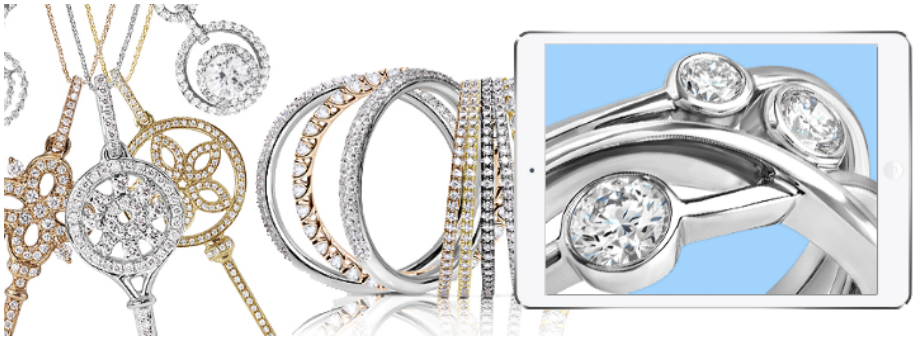
Takeaway
Our client thrives in their industry because photos of their product can tell a story. Their diamonds sparkle and bring out the brilliance that radiates luxury and elegance, one worth buying among other luxury jewelry sellers in the market. Because of their photos highlighting the best parts of their products, our client successfully entices customers with both words promising the luxury of owning or gifting diamond jewelry, as well as the stunning photos that back up their reputation as a respectable seller in the industry.
Our photography and editing services have allowed this client and all our other clients to put their products’ best foot forward in their photos. If you’re selling a physical item, it’s not enough to just snap a photo pick a pre-made filter, and call it a day. It takes a creative team of professionals to take the bulk of your images and turn your product photos into an enticing ad that convinces your customers to give your products their attention.
We have a gallery of our work and there are a lot more services we can provide for our clients apart from the services mentioned. Interested to learn what else we can do for your business? Talk to us today.

